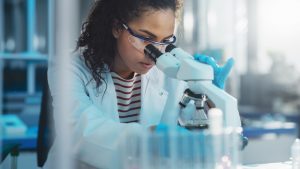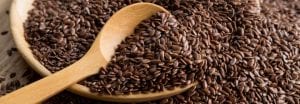
Scientists discovered years ago that newborns depend on immune components transmitted by their mothers to survive the onslaught of pathogens that begin to invade their bodies as soon as they are born. Eventually, children develop their own immune systems, built by surviving natural exposure to viruses and bacteria and supplemented by well-established childhood vaccines. But in the meantime, maternal antibodies are extremely important.
Researchers Could Mimic Maternal Antibodies
A wide-ranging study published in Nature provides a surprising explanation for how those early days of maternal-provided immunity actually work – and what this information could mean for the  prevention of death and disability from one of many infectious diseases. The findings suggest researchers may be able to mimic the boosted antibodies that expectant mothers produce to design new drugs to treat diseases, as well as improved vaccines to prevent them. For many years, scientists believed that antibodies could not penetrate cells. They don’t have the necessary machinery. Therefore, it was assumed that infections caused by pathogens that live exclusively in cells are invisible to antibody-based therapies. The study results show that pregnancy alters the structure of certain sugars bound to the antibodies, allowing them to protect babies from infection by a much broader spectrum of pathogens.
prevention of death and disability from one of many infectious diseases. The findings suggest researchers may be able to mimic the boosted antibodies that expectant mothers produce to design new drugs to treat diseases, as well as improved vaccines to prevent them. For many years, scientists believed that antibodies could not penetrate cells. They don’t have the necessary machinery. Therefore, it was assumed that infections caused by pathogens that live exclusively in cells are invisible to antibody-based therapies. The study results show that pregnancy alters the structure of certain sugars bound to the antibodies, allowing them to protect babies from infection by a much broader spectrum of pathogens.
The researchers explain that the special bond begins when babies are in the womb and continues after birth. This discovery paves the way for breakthrough new therapies that can target infections, particularly in pregnant women and newborns, and that these findings will have far-reaching implications for antibody-based therapies in other areas as well.
Improved Treatments and New Vaccines
The study identified which specific sugars are changed during pregnancy, as well as how and when the change occurs. During pregnancy, the ‘acetylated’ form of sialic acid (one of the sugars bound to antibodies) changes to the ‘deacetylated’ form. This very subtle molecular change allows immunoglobulin G (IgG) – the body’s most abundant type of antibody – to perform an advanced protective role by stimulating immunity through receptors that specifically respond to deacetylated sugars. This change is the light switch that allows maternal antibodies to protect babies from infection in the cells.
Using advanced mass spectrometry techniques and other methods, the research team was able to identify the key biochemical differences between antibodies in virgin mice compared to pregnant mice. They also identified the enzyme that is naturally expressed during pregnancy and is responsible for this transformation. In addition, the team successfully restored lost immune protection by delivering lab-grown stocks of the antibodies from healthy pregnant mice to pups born to mothers genetically altered so that they were unable to perform acetylation of antibodies to improve protection. Hundreds of monoclonal antibodies have been made as potential treatments for various conditions such as cancer, asthma, multiple sclerosis, and hard-to-break viral and bacterial infections — including new treatments being developed for COVID-19.
The researchers explain that the molecular change in antibodies that occurs naturally during pregnancy can be replicated to change how antibodies stimulate the immune system to fine-tune their effects. This could potentially lead to improved treatments for infections caused by other intracellular pathogens, including HIV and respiratory syncytial virus (RSV), a common virus that poses a serious risk to infants.
The study shows that the molecular switch remains in breastfeeding mothers, so that antibodies with an increased protective effect are also transmitted to babies via breast milk. In addition, according to the experts, the results underscore the importance of getting all available vaccines for women of childbearing age – as well as the need for researchers to develop even more vaccines against infections that are particularly common in women during pregnancy or in newborns.
Breast Milk Protects the Baby from Allergic Diseases
A number of studies have shown that breast milk protects infants from different diseases. A study from Penn State College of Medicine found that small molecules found in most people’s breast milk may reduce the chances of infants developing allergic conditions such as atopic dermatitis and food allergies. It is believed that breastfed babies are less likely to suffer from allergic conditions such as eczema and food allergies than formula-fed children. These findings are important because they lead to strategies, such as encouragement and support for breastfeeding or diet and exercise interventions, to reduce the likelihood of babies developing allergies. Atopic diseases such as food allergies, asthma and a skin condition called atopic dermatitis occur in about one third of all children as a result of inappropriate activation of the immune system by environmental exposure.
There are nearly 1,000 different types of miRNAs in human breast milk, and the composition varies based on maternal characteristics such as weight, diet and genetics. The researchers hypothesized that four of these miRNAs may have a protective effect against infant allergies based on previous research showing relationships between these miRNAs and certain allergic diseases. Researchers followed 163 mothers who planned to breastfeed for at least four months and their infants from birth to 12 months of age. They tracked how long each baby was breastfed and measured the miRNA composition of each mother’s breast milk over the course of lactation (0, 4 and 16 weeks). The team calculated the amount of specific miRNAs infants were consuming based on reported breastfeeding patterns and the levels of specific miRNAs in breast milk samples. Researchers monitored infants for atopic dermatitis, food allergies, and wheezing throughout the study.
Measures to Increase MiRNA Levels
Of the infants studied, 25% developed atopic dermatitis, 20% developed a food allergy, and 6% suffered from wheezing. Infants who did not develop atopy, consumed on average, higher levels of miRNA-375-3p (miR-375) in breast milk than infants who did develop it. There were no other differences in maternal characteristics, infantile characteristics, or environmental exposures between infants with atopy and those without. The researchers also found that levels of this miRNA increased throughout lactation, and that mothers with lower body mass index tended to have higher levels of miR-375.
The fact that miR-375 levels increased over the course of lactation could explain why sustained breastfeeding was associated with reduced atopy in certain studies, the researchers said. Namely, it was found that the largest increase in miR-375 occurred in the first month after birth, but that the upward trend continued between the first and fourth month. Unlike infant formula, which does not contain human miRNAs, miR-375 is present in more than 99% of human milk samples and accounts for just under 1% of all miRNAs in human milk.
According to the scientists, the results of this study could lead to new interventions to prevent infants from developing allergies. Future research will focus on confirming these results, defining the mechanisms by which miR-375 prevents allergy, and investigating interventions to increase miR-375 levels in maternal milk.



